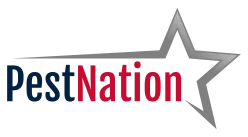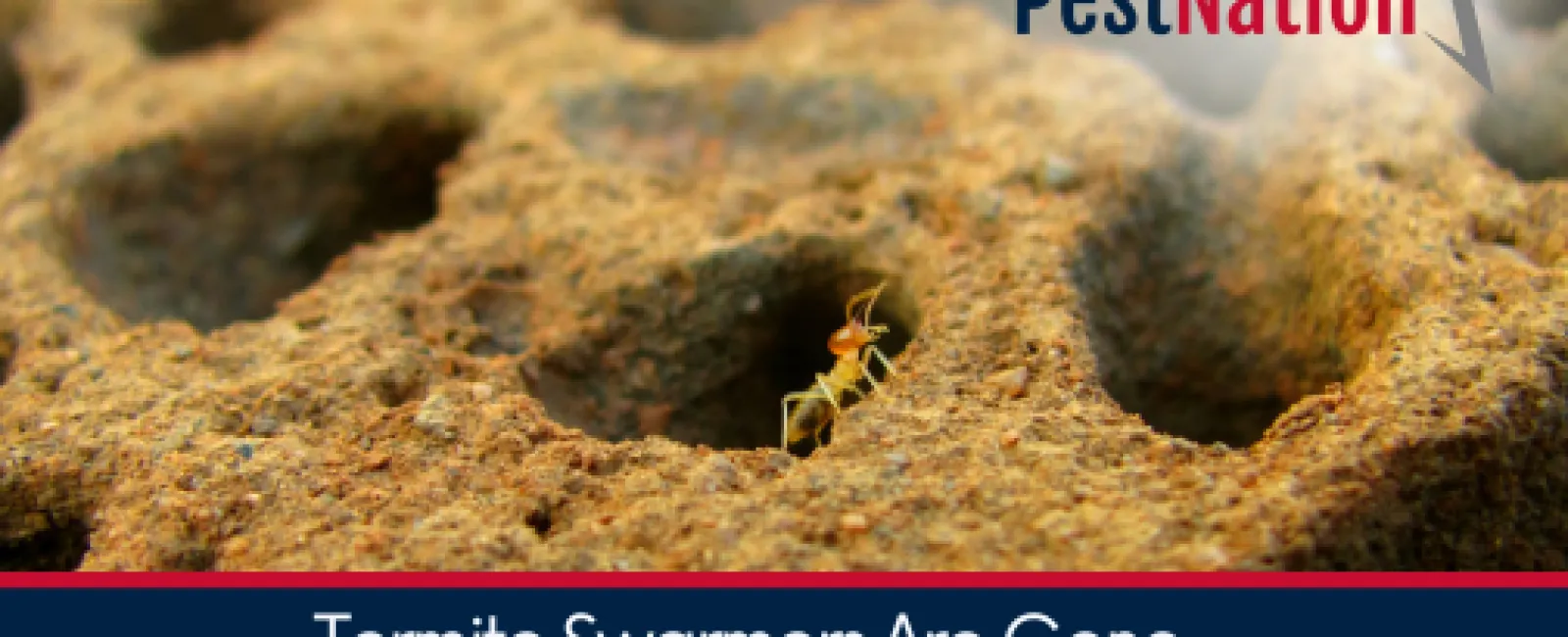Each year, as spring gives way to early summer, homeowners across Atlanta, Charlotte, and Charleston begin noticing an unsettling phenomenon: clouds of winged termites, known as swarmers, suddenly appearing around windows, doors, and outdoor lights. These termite swarmers are often the first visible sign that a termite colony is nearby—or worse, already inside your home. But what happens once the swarm is over and the winged pests vanish?
Many homeowners mistakenly believe that the absence of swarmers means the threat is gone. Unfortunately, that's not the case. While swarmers may have disappeared, the colony that produced them may still be active, expanding, and silently causing structural damage behind walls, under flooring, or inside foundations. At PestNation, we urge homeowners to view swarmers not as the problem itself, but as a critical warning sign. A single swarm could represent a mature, multi-year infestation that's feeding on the wood within your home.
Understanding the lifecycle of termites, and the specific role swarmers play, is key to protecting your property. With the right knowledge—and proactive support from PestNation pest inspections and quarterly services—you can stop the damage before it becomes costly or irreversible.
What Are Termite Swarmers, and Why Do They Appear?
1. The Role of Swarmers in the Colony
Termite swarmers are reproductive members of a termite colony. Their job is to leave the nest, pair up, shed their wings, and establish new colonies nearby. A termite colony will only begin producing swarmers once it has reached maturity—typically after 3 to 5 years of steady growth. That means if you see swarmers, you're likely dealing with a well-established infestation.
Swarming typically occurs during warm, humid months, often after rain. In Atlanta, Charlotte, and Charleston, swarming season typically begins in the spring and continues into early summer, though environmental factors can cause slight regional shifts.
2. Why Swarmers Disappear Quickly
Swarmers are not strong fliers and generally live for just a short period outside the colony. They are highly attracted to light and are often found around windows, doors, and porch lights. Once they pair off, they lose their wings and begin forming new nests. Homeowners may notice discarded wings near sills or on floors—a telltale sign that swarmers have been present.
Even if you no longer see swarmers, the damage is already done. The parent colony is still alive, and if a new pair has established another nest, your termite problem has potentially doubled.
What Happens After the Swarm Ends?
1. Continued Colony Activity
Termite colonies don't slow down just because the swarm has ended. Workers continue to forage, consume wood, and expand tunnels. These subterranean invaders work 24/7, often undetected for months or years, feeding on wood, paper, insulation, and even drywall.
In homes across Charlotte, Atlanta, and Charleston, we frequently find termite activity continuing long after the swarm has passed. PestNation pest inspections often uncover hidden damage in:
-
Wall studs and joists
-
Subflooring
-
Crawl spaces
-
Basements and foundations
-
Roof sheathing and attic beams
The absence of visible termites doesn't mean your home is safe—it just means the colony has moved back underground or deeper into the structure.
2. Ongoing Structural Damage
Termites feed on cellulose, which is found in wood and many construction materials. As they tunnel and consume these materials, they weaken structural components. Over time, this leads to:
-
Sagging floors
-
Warped door frames
-
Hollow-sounding wood
-
Cracking paint or plaster
-
Mud tubes along walls or foundation lines
By the time physical signs of damage are visible, the infestation is often extensive and expensive to repair. That's why early detection is key—and why quarterly services from PestNation are so valuable.
Why Homeowners Miss the Signs
Despite their destructive potential, termites are often missed until major damage has occurred. There are several reasons for this:
-
Silent behavior: Termites don't make noise as they work.
-
Hidden tunnels: Most activity takes place within walls or underground.
-
Swarm timing: Swarms are brief and often occur outdoors or in hard-to-spot areas.
-
Misidentification: Swarmers resemble flying ants and are frequently dismissed.
This is where the expertise of PestNation pest inspections comes in. Our trained technicians know how to recognize even the subtlest indicators of termite presence and damage. Whether you've seen swarmers or not, regular inspections are your best defense.
Why Post-Swarm Season Is the Best Time for Inspection
It may seem counterintuitive, but after swarm season is the most strategic time to schedule a termite inspection. The swarm has served its purpose—it's signaled that a colony is active nearby. Now is your opportunity to take proactive measures before the termites continue their destruction unchecked.
PestNation's termite inspections are especially important during this window because:
-
The colony is active and accessible
-
Damage may already be visible or detectable with tools
-
New secondary colonies may be forming
-
Preventive treatment can halt spread
Our inspectors servicing Charleston, Charlotte, and Atlanta homes use moisture meters, infrared tools, and expert analysis to locate hidden infestations that homeowners would never see on their own.
How PestNation Protects Your Home
At PestNation, we offer a comprehensive approach to termite control that's tailored to your region, your home's structure, and the time of year. Here's how we help:
1. Comprehensive PestNation Pest Inspections
Our inspections cover all potential access points and structural vulnerabilities. We don't just look for termites—we look for conducive conditions, such as:
-
Wood-to-soil contact
-
Excess moisture or drainage issues
-
Foundation cracks
-
Unsealed utility openings
This ensures your termite solution isn't just reactive, but also preventive.
2. Targeted Termite Treatments
Depending on the nature of your infestation, PestNation may recommend:
-
Liquid treatments for full-perimeter protection
-
Foaming and dust treatments for localized colonies
-
Bait stations for ongoing colony monitoring and elimination
These options are designed to work long-term, not just eliminate current activity. We use non-invasive, family-safe, and effective methods suited for all types of construction and soil types found across Atlanta, Charlotte, and Charleston.
3. Ongoing Quarterly Services
With quarterly services, we revisit your property throughout the year, applying updated treatments, inspecting at-risk areas, and ensuring colonies haven't re-established. This is particularly valuable in the Southeast where subterranean termites remain active nearly year-round due to the mild climate.
Our clients enjoy:
-
Scheduled seasonal visits
-
Detailed reports and findings
-
Peace of mind that no termite activity goes unchecked
What You Can Do Between Visits
While professional inspections are vital, homeowners can support prevention by:
-
Reducing wood-to-soil contact (e.g., using concrete or stone barriers)
-
Fixing leaky plumbing or poor drainage
-
Keeping mulch and firewood away from the foundation
-
Sealing cracks and utility entry points
Still, termites are tenacious and skilled at evading detection, which is why even the most meticulous homeowner can benefit from professional help.
Just because you no longer see termite swarmers doesn't mean your home is safe. In fact, their brief appearance may have been a final warning from a colony that's already well-entrenched in your walls, floors, or foundation. Too often, homeowners breathe a sigh of relief after the swarm ends—only to discover months or years later that thousands of termites never left.
At PestNation, we want to change the narrative. We help homeowners in Atlanta, Charlotte, and Charleston move from reactive to proactive pest control. With expert PestNation pest inspections, industry-leading interior and exterior pest treatments, and seasonally tailored quarterly services, we ensure your home remains protected long after the swarmers are gone.
Don't wait until the damage becomes visible or expensive. If you saw swarmers this season—or even if you didn't—schedule your PestNation termite inspection today. Your home deserves lasting protection, and we're here to deliver it.

